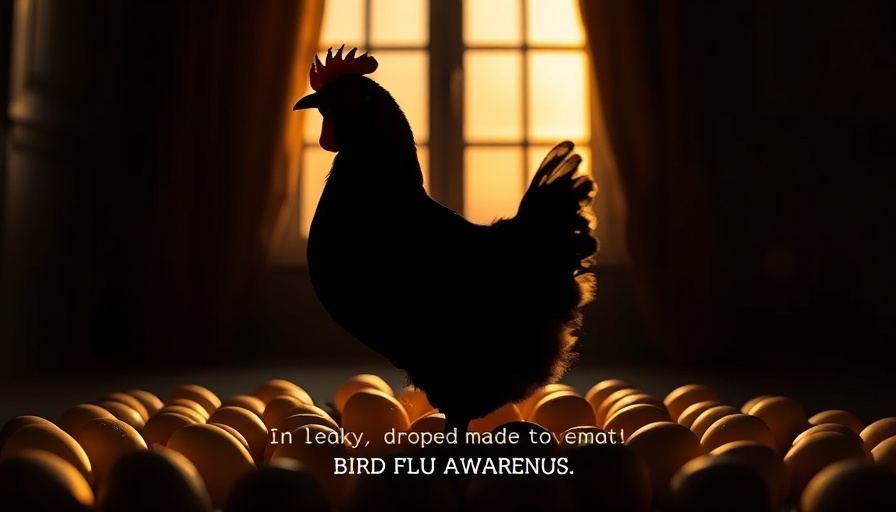
The Evolution of Bird Flu: From Pond to Pandemic
Bird flu, specifically known as H5N1, has transformed over the years from a benign virus in wild ducks to an alarming potential threat to human health. Its origins can be traced back millions of years when it primarily resided in the intestines of birds, causing little to no harm. However, as Michael Greger outlines in his comprehensive work, Bird Flu: A Virus of Our Own Hatching, human activities have dramatically influenced its evolution. Farm practices, including the close confinement of domesticated animals and the globalized poultry trade, have created ideal conditions for the virus to mutate and expand its range, raising fears of a potential pandemic.
Recent Outbreaks: The Current Landscape
In 2025 alone, the world has witnessed significant outbreaks of H5N1, particularly affecting dairy and poultry farms. Over 70 reported human cases have emerged, mainly occurring among those closely working with infected animals. The fatality rate has catalyzed public health concerns, especially after a recent death in Louisiana highlighted the virus's potential to mutate within human hosts. Experts are warning that while the current risk to the general public remains low, continued mutations could grant the virus the capability for human-to-human transmission, which is a primary concern for health authorities.
How Does Bird Flu Spread?
The primary mode of transmission from birds to humans occurs through direct contact, typically involving farm workers or individuals who are around infected environments. As Dr. Céline Gounder notes, those stationed in close quarters with dairy cows or poultry are at an elevated risk simply due to the nature of their work. Emphasizing hygiene, particularly washing hands and using protective equipment, is crucial for safeguarding against infection.
The Impact of Bird Flu on the Food Supply
As the H5N1 virus continues to impact flocks across the U.S., the ramifications on food supply become increasingly apparent. The outbreak has led to the euthanasia of millions of birds, resulting in significant shortages of eggs and rising prices. Health experts recommend thorough cooking and pasteurization as key measures to mitigate any infection risks related to poultry and dairy products. Such precautionary actions are essential, especially in light of a growing trend where unpasteurized dairy products have gained popularity.
Why Understanding the Virus Matters
Having knowledge of how H5N1 interacts with both avian and mammalian hosts is critical in developing strategies to contain its spread. Epidemiologists emphasize the need for greater surveillance, particularly on farms and among wildlife populations, to track potential crossings of the virus to humans. As the strain evolves, monitoring changes in the virus's characteristics becomes increasingly crucial in preempting a pandemic scenario.
What Can We Do to Prevent a Bird Flu Pandemic?
Continued efforts in public health surveillance and education about the H5N1 virus are vital. Ensuring that those in high-risk occupations are well-informed about preventive measures can limit substantial outbreaks. Furthermore, public understanding of cooking and handling food safely can help shield families from infection. The conversation around vaccines also needs to be broadened, as authorities prepare options against bird flu's potentially evolving threat.
Conclusion: Staying Informed and Vigilant
The evolving landscape of the H5N1 virus underscores the importance of remaining vigilant and informed. From understanding transmission dynamics to making safe food choices, knowledge is our best defense against potential outbreaks. It is vital for individuals, families, and the broader community to stay updated on the latest public health guidelines and contribute to the collective effort in combating the threat of bird flu.
If you want to learn more about bird flu and stay on top of public health updates, consider reading Dr. Greger's How to Survive a Pandemic.
Take proactive steps to educate yourself and your loved ones today!
#H5N1, #birdflu, #pandemic, #publichealth, #humantransmission, #foodsupply, #hygiene, #surveillance, #vaccines, #outbreaks
 Add Row
Add Row  Add
Add 




Write A Comment